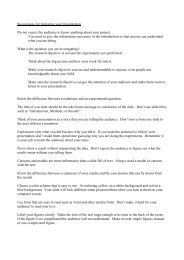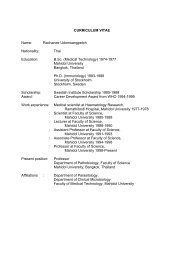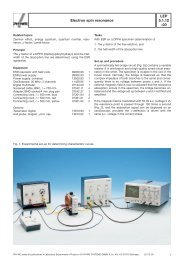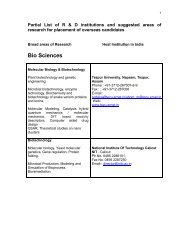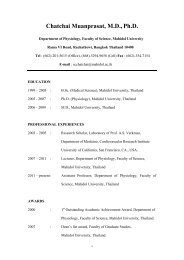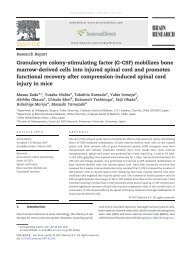You also want an ePaper? Increase the reach of your titles
YUMPU automatically turns print PDFs into web optimized ePapers that Google loves.
NEUROPHYSIOLOGY<br />
Auditory System: Pathways<br />
Acoustic area of<br />
temporal lobe cortex<br />
Medial geniculate body<br />
Brachium of<br />
inferior<br />
colliculus<br />
Inferior<br />
colliculus<br />
Midbrain<br />
Lateral<br />
lemnisci<br />
Medulla<br />
oblongata<br />
Nuclei of<br />
lateral<br />
lemnisci<br />
Correspondence<br />
between cochlea<br />
and acoustic area<br />
of cortex:<br />
Low tones<br />
Middle tones<br />
High tones<br />
Dorsal cochlear nucleus<br />
Inferior cerebellar peduncle<br />
Ventral cochlear nucleus<br />
Cochlear division of<br />
vestibulocochlear nerve<br />
Dorsal<br />
acoustic stria<br />
Reticular formation<br />
Trapezoid body<br />
Intermediate acoustic stria<br />
Superior olivary complex<br />
Inner Outer<br />
Spiral ganglion<br />
Hair cells<br />
©<br />
FIGURE 2.35<br />
AUDITORY PATHWAYS •<br />
The cochlea transduces sound into electrical signals. Axons convey<br />
these signals to the dorsal and ventral cochlear nuclei, where it is<br />
tonotopically organized. Following a series of integrated relay<br />
pathways, the ascending pathway projects to the thalamus (medial<br />
geniculate bodies) and then the acoustic cortex in the transverse<br />
gyrus of the temporal lobe, where information is tonotopically represented<br />
(low, middle, and high tones).<br />
86



